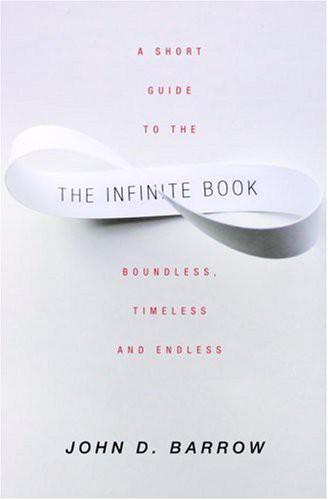
The Infinite Book: A Short Guide to the Boundless, Timeless and Endless
by
John D. Barrow
Published 1 Aug 2005
The information conveyed by the words ‘the statement T is true’ is different from that contained in the statement T itself. Chapter five The Madness of Georg Cantor 1. (1888–1973) US naturalist and environmental activist http://www.melodyonline.com/quotes2.htm 2. A. Christie, An Autobiography, HarperCollins, London, 1998. 3. Quoted in E. Schechter, Handbook of Analysis and its Foundations, Academic, New York, 1998. 4. J. Dauben, Georg Cantor, Princeton University Press, 1990, p. 1. 5. Photograph of Leopold Kronecker, c. 1885, copyright © akg-images. 6. D. Burton, History of Mathematics, 3rd edn, Wm. C. Brown, Dubuque, IA, 1995, p. 593. 7. Dauben, Georg Cantor, p. 134. 8. Ibid. 9. Ibid., p. 135. 10.
…
chapter five The Madness of Georg Cantor ‘To be listened to is a nearly unique experience for most people. It is enormously stimulating. Man clamors for the freedom to express himself and for knowing that he counts.’ Robert C. Murphy 1 CANTOR AND SON ‘I continued to do arithmetic with my father, passing proudly through fractions to decimals. I eventually arrived at the point where so many cows ate so much grass, and tanks filled with water in so many hours. I found it quite enthralling.’ Agatha Christie2 Cantor & Co. was a successful international wholesale business, and as a result young Georg Cantor was one of six children who grew up in comfortable circumstances, attending good private schools in Frankfurt.
…
The Norwegian Academy has recently created an international prize for mathematics, to rival the Swedish Academy’s long-standing Nobel Prizes in science, literature, economics and peace, called the Abel Prize in honour of Niels Abel (1802–29); it rhymes nicely with Nobel and has similar monetary value. The first winner, in 2003, was French mathematician J.P. Serre. 18. Photograph of Georg Cantor with his wife, Vally, c. 1880, reproduced from Joseph Warren Dauben, Georg Cantor: His Mathematics and Philosophy of the Infinite, Harvard University Press, 1979. 19. F. Hutcheson (1694–1746), Inquiry into the Original of Our Ideas of Beauty and Virtue, J. Darby, London, 1720, II, iii. 20. This proviso is to remove the ambiguity created by decimals that end with recurring 9’s.
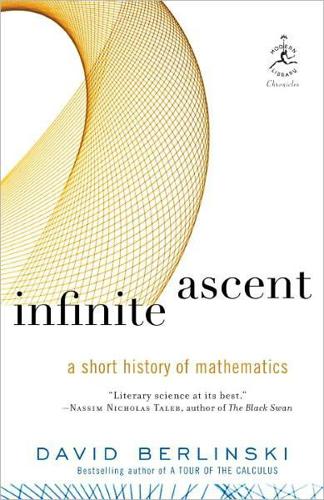
Infinite Ascent: A Short History of Mathematics
by
David Berlinski
Published 2 Jan 2005
But neither my own verbal gestures, nor any table of examples, succeed in providing what is really needed, and that is a moment of complete intellectual clarity, circumstances that may be read backward into the late seventeenth century, as Leibniz used one concept that he could not precisely define to explore other concepts that he could not precisely see. Two centuries were to pass before Georg Cantor was to discover the words that in 1684 Leibniz lacked; during all that time, mathematicians continued to use functions of the most remarkable variety, indifferent to their own inability to capture the concept completely. What follows is thus an exercise in anachronism. I am explaining what Leibniz thought as he would have wished to have thought it; in this way, the calculations that he imagined were easy to explain turn out against every expectation to be easy to explain.
…
If mathematics had since the death of Euler in 1785 lost something of its untamed rhapsodic aspect, what it gained was something even more considerable—intellectual mass, soberness, organization, discipline, self-confidence. All eyes on Berlin, of course. Let me interrupt myself to ask: Is a crack-up coming? And to answer: Of course it is. Georg Cantor was born in St. Petersburg in 1845 and spent the first eleven years of his life in the rich, warm, syrupy Russian milieu made accessible by his father’s success as a shrewd merchant. When, in 1856, his father moved his family to Wiesbaden in Germany, Cantor acquired a second language and so a second culture, but he retained throughout his life the notably dreamy disposition of a man inhabiting a larger imaginative space than his tidy German surroundings might have suggested.
…
He won his father’s permission to study mathematics, the exchange between the two men, far from being a tense domestic drama, apparently marked instead by the mutual tenderness of two romantic temperaments, both concerned to please the other. These details might suggest a young man embarking on a modest mathematical career. Nothing of the sort. Georg Cantor initiated a great upheaval in nineteenth-century thought, carrying out one of those revolutions that like certain earthquakes survive in the form of aftershocks long after the first tremor has subsided. The effort dominated his life and it drove him to madness, so that in his last years, when not resident in various lunatic asylums, he occupied himself in proving to his satisfaction that Shakespeare had not written his own plays.
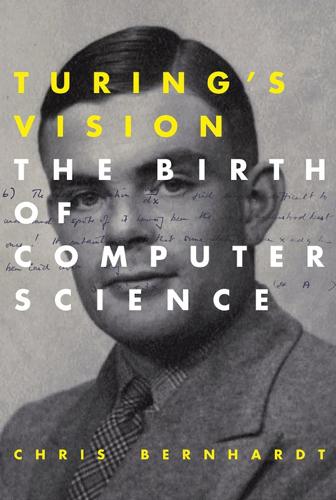
Turing's Vision: The Birth of Computer Science
by
Chris Bernhardt
Published 12 May 2016
He wanted an undecidable problem that was immediately comprehensible to mathematicians. He found one using an ingenious argument of Georg Cantor. 8 Cantor’s Diagonalization Arguments “I see it, but I don’t believe it!” Georg Cantor “I don’t know what predominates in Cantor’s theory — philosophy or theology, but I am sure that there is no mathematics there.” Leopold Kronecker “No one shall drive us from the paradise which Cantor has created for us.” David Hilbert Georg Cantor 1845–1918 Georg Cantor moved with his family from St. Petersberg to Germany when he was eleven years old. After completing his dissertation at the University of Berlin in 1867 he took up a position at the University of Halle where he remained for his professional life.
…
Undecidable Problems Proof by Contradiction Russell’s Barber Finite Automata That Do Not Accept Their Encodings Turing Machines That Do Not Accept Their Encodings Does a Turing Machine Diverge on Its Encoding? Is Undecidable The Acceptance, Halting, and Blank Tape Problems An Uncomputable Function Turing’s Approach 8. Cantor’s Diagonalization Arguments Georg Cantor 1845–1918 Cardinality Subsets of the Rationals That Have the Same Cardinality Hilbert’s Hotel Subtraction Is Not Well-Defined General Diagonal Argument The Cardinality of the Real Numbers The Diagonal Argument The Continuum Hypothesis The Cardinality of Computations Computable Numbers A Non-Computable Number There Is a Countable Number of Computable Numbers Computable Numbers Are Not Effectively Enumerable 9.
…
This is what the Hungarian mathematician Paul Erdős was referring to when he talked about The Book. According to Erdős, there is a book in which God had written down all the shortest, most beautiful proofs. Erdős famously said “You don’t have to believe in God, but you should believe in The Book.” Turing’s proofs, along with those of Gödel and Georg Cantor on which they are based, are definitely in The Book. This book is for the reader who wants to understand these ideas. We start from the beginning and build carefully. The reader doesn’t have to know much mathematics — high school provides enough — but it does require some mathematical aptitude and also a little work.
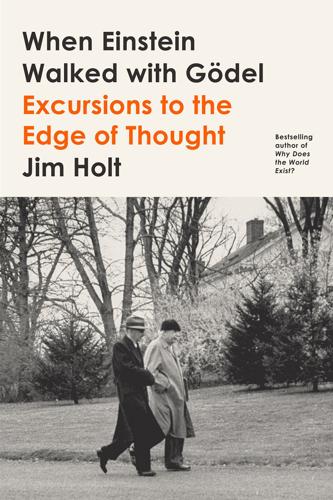
When Einstein Walked With Gödel: Excursions to the Edge of Thought
by
Jim Holt
Published 14 May 2018
The originator of group theory, Évariste Galois, was killed in a duel before he reached his twenty-first birthday. The most revolutionary mathematician of the last half century, Alexander Grothendieck, ended his turbulent days as a delusional hermit in the Pyrenees. The creator of the theory of infinity, Georg Cantor, was a kabbalistic mystic who died in an insane asylum. Ada Lovelace, the cult goddess of cyber feminism (and namesake of the programming language used by the U.S. Department of Defense), was plagued by nervous crises brought on by her obsession with atoning for the incestuous excesses of her father, Lord Byron.
…
When I looked at the map of the United States in the back of a huge dictionary that I once won in a spelling bee for New York journalists, I noticed with mild surprise that it was colored with precisely four colors. Sadly, though, the states of Arkansas and Louisiana, which share a border, were both blue. PART V Infinity, Large and Small 11 Infinite Visions: Georg Cantor v. David Foster Wallace Few ideas have had a racier history than the idea of infinity. It arose amid ancient paradoxes, proceeded to baffle philosophers for a couple of millennia, and then, by a daring feat of intellect, was finally made to yield its secrets in the late nineteenth century, though not without leaving a new batch of paradoxes.
…
When two finite sets can be made to correspond in this way, so that each item from the first set gets matched with precisely one item from the second set, and vice versa, you know that they are of equal size without having to go through the tedious business of counting. Extending the principle to infinite collections, Galileo felt himself drawn toward the conclusion that there are as many square numbers as there are numbers, period. The part, in other words, was equal to the whole—a result that struck him as absurd. Two and a half centuries later, Georg Cantor made Galileo’s paradox the basis for a mathematical theory of infinity. Cantor, who lived from 1845 to 1918, was a Russian-born German mathematician with an artistic streak and a keen interest in theology. He saw that the collapse of the familiar logic of part-and-whole yielded a new definition of infinity, one that did not rely on the vague notion of endlessness.
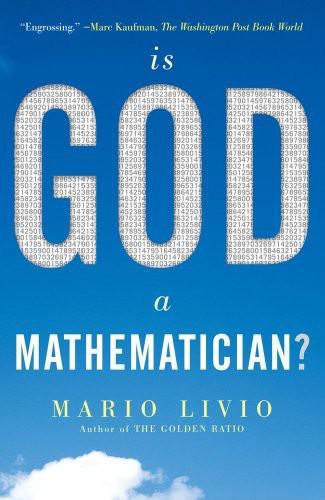
Is God a Mathematician?
by
Mario Livio
Published 6 Jan 2009
First, the introduction of abstract geometric spaces and of the notion of infinity (in both geometry and the theory of sets) had blurred the meaning of “quantity” and of “measurement” beyond recognition. Second, the rapidly multiplying studies of mathematical abstractions helped to distance mathematics even further from physical reality, while breathing life and “existence” into the abstractions themselves. Georg Cantor (1845–1918), the creator of set theory, characterized the newly found spirit of freedom of mathematics by the following “declaration of independence”: “Mathematics is in its development entirely free and is only bound in the self-evident respect that its concepts must both be consistent with each other and also stand in exact relationships, ordered by definitions, to those concepts which have previously been introduced and are already at hand and established.”
…
Quine once noted: “More than once in history the discovery of paradox has been the occasion for major reconstruction at the foundation of thought.” Russell’s paradox provided for precisely such an occasion. Russell’s Paradox The person who essentially single-handedly founded the theory of sets was the German mathematician Georg Cantor. Sets, or classes, quickly proved to be so fundamental and so intertwined with logic that any attempt to build mathematics on the foundation of logic necessarily implied that one was building it on the axiomatic foundation of set theory. A class or a set is simply a collection of objects. The objects don’t have to be related in any way.
…
Due to the perceived drawbacks of the axiom of choice, mathematicians started to wonder whether the axiom could either be proved using the other axioms or refuted by them. The history of Euclid’s fifth axiom was literally repeating itself. A partial answer was finally given in the late 1930s. Kurt Gödel (1906–78), one of the most influential logicians of all time, proved that the axiom of choice and another famous conjecture due to the founder of set theory, Georg Cantor, known as the continuum hypothesis, were both consistent with the other Zermelo-Fraenkel axioms. That is, neither of the two hypotheses could be refuted using the other standard set theory axioms. Additional proofs in 1963 by the American mathematician Paul Cohen (1934–2007, who sadly passed away during the time I was writing this book) established the complete independence of the axiom of choice and the continuum hypothesis.
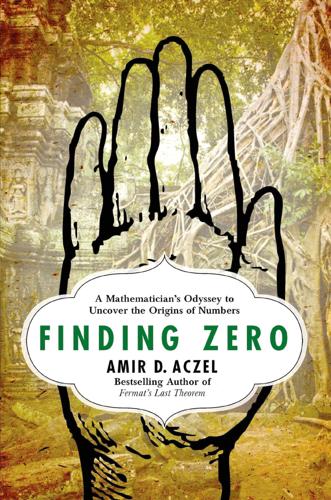
Finding Zero: A Mathematician's Odyssey to Uncover the Origins of Numbers
by
Amir D. Aczel
Published 6 Jan 2015
I studied philosophy for many years, including the philosophy of mathematics.” What was so surprising—and something I had not realized before—was that what he told me based on the Jain text provided some proof of a real mathematical understanding of infinity so early, and so long before a great genius in Germany, the tormented mathematician Georg Cantor, was able to explain the same concepts. Cantor was a mathematician at the University of Halle in eastern Germany in the late 1800s, where he single-handedly developed the mathematics of infinity. He had been a student at the University of Berlin, one of the most important universities in Europe at that time, studying under a mathematics giant, Karl Weierstrass, who contributed hugely to our understanding of the real numbers: the numbers on the real number line, which include both rational numbers (integers or quotients of integers) and irrational numbers (numbers, such as pi, that cannot be expressed as quotients of integers).
…
Moore, eds., A Sourcebook on Indian Philosophy (Princeton, NJ: Princeton University Press, 1957), quoted in Graham Priest, “The Logic of the Catuskoti,” 25. Priest explains that “saint” is a poor translation and that what it means is someone who has reached enlightenment, a Buddha (or Tathagata). 4. Graham Priest, “The Logic of the Catuskoti,” 28. Chapter 17 1. For more on the story of Georg Cantor and the various levels of infinity, see Amir D. Aczel, The Mystery of the Aleph (New York: Washington Square Books, 2001). Chapter 22 1. For accurate radiocarbon dating of the Thera explosion see Amir D. Aczel, “Improved Radiocarbon Age Estimation Using the Bootstrap,” Radiocarbon 37, no. 3 (1995): 845–49.
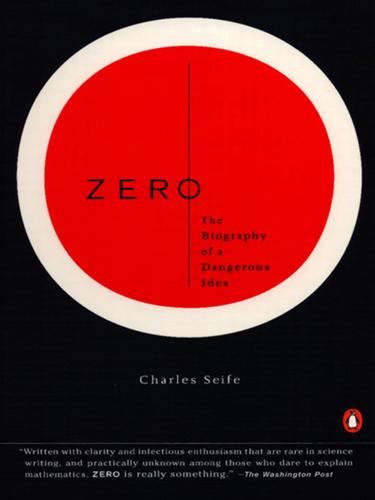
Zero: The Biography of a Dangerous Idea
by
Charles Seife
Published 31 Aug 2000
Do it again and again; the number will quickly zoom toward infinity or toward zero, except if you entered 1 or -1 to begin with. There is no escape.) The Infinite Zero My theory stands as firm as a rock; every arrow directed against it will return quickly to its archer. How do I know this? I have studied it…I have followed its roots, so to speak, to the first infallible cause of all created things. —GEORG CANTOR Infinity was no longer mystical; it became an ordinary number. It was a specimen impaled on a pin, ready for study, and mathematicians were quick to analyze it. But in the deepest infinity—nestled within the vast continuum of numbers—zero kept appearing. Most appalling of all, infinity itself can be a zero.
…
In even the tiniest neighborhood around the singularity, the curve takes on almost every conceivable value over and over and over again. Yet as weird as these singularities behave, they were no longer mysterious to mathematicians, who were learning to dissect the infinite. The master anatomist of the infinite was Georg Cantor. Though he was born in Russia in 1845, Cantor spent most of his life in Germany. And it was in Germany—the land of Gauss and of Riemann—where infinity’s secrets were revealed. Unfortunately, Germany was also the land of Leopold Kronecker, the mathematician who would hound Cantor into a mental institution.
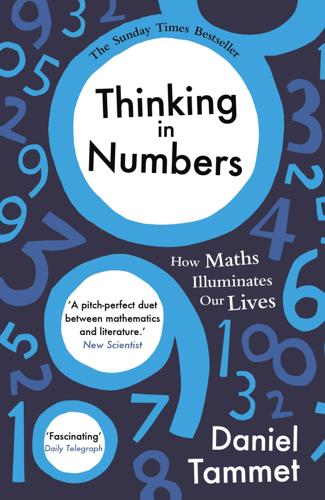
Thinking in Numbers
by
Daniel Tammet
Published 15 Aug 2012
Returning to Borges’s list of subsets of animals, several of the categories pose paradoxes. Take, for example, the subset (j): ‘innumerable ones’. How can any subset of something – even if it is imaginary, like Borges’s animals – be infinite in size? How can a part of any collection not be smaller than the whole? Borges’s taxonomy is clearly inspired by the work of Georg Cantor, a nineteenth-century German mathematician whose important discoveries in the study of infinity provide us with an answer to the paradox. Cantor showed, among other things, that parts of a collection (subsets) as great as the whole (set) really do exist. Counting, he observed, involves matching the members of one set to another.
…
I have read of oxen that carried their burden for precisely the same duration every day. No whip could persuade them to continue beyond it. We wear the tally of our years on our brow and cheeks. I doubt our body could ever lose its count. Like the ox, each knows intimately the moment when to stop. Higher than Heaven On 22 January 1886 Georg Cantor, who had discovered the existence of an infinite number of infinities, wrote a letter to Cardinal Johannes Franzen of the Vatican Council, defending his ideas against the possible charge of blasphemy. A devout believer, the mathematician considered himself a friend of the Church. God, he believed, had used his preoccupation with numbers to reveal a further aspect of His infinite nature.
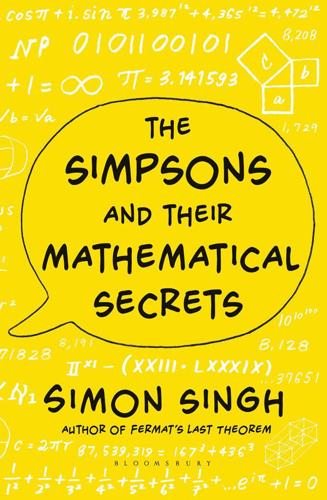
The Simpsons and Their Mathematical Secrets
by
Simon Singh
Published 29 Oct 2013
However, there was general agreement that Homer and Ned’s petty argument would have derailed the scriptwriting process, as it would have triggered a debate over the nature of infinity. So, is infinity plus one more than infinity? Is it a meaningful statement or just gobbledygook? Can it be proved? In their efforts to answer these questions, the mathematicians around the scripting table would doubtless have mentioned the name of Georg Cantor, who was born in St. Petersburg, Russia, in 1845. Cantor was the first mathematician to really grapple with the meaning of infinity. However, his explanations were always deeply technical, so it was left to the eminent German mathematician David Hilbert (1862–1943) to convey Cantor’s research.
…
In other words, when we try to match up the two infinities, the list of decimals between 0 and 1 is doomed to be incomplete, presumably because the infinity of decimal numbers is greater than the infinity of counting numbers. This argument is a simplified version of Cantor’s diagonal argument, a watertight proof published in 1892 by Georg Cantor. Having confirmed that some infinites are bigger than others, Cantor was confident that the infinity that describes counting numbers was the smallest type of infinity, so he labeled it 0, with (aleph) being the first letter of the Hebrew alphabet. He suspected that the set of decimals between 0 and 1 illustrated the next and bigger type of infinity, so he labeled it 1 (aleph-one).
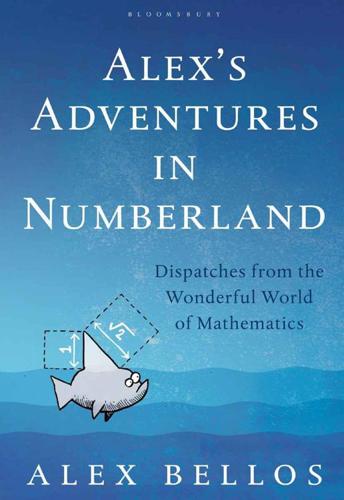
Alex's Adventures in Numberland
by
Alex Bellos
Published 3 Apr 2011
‘Non-Euclidean’ geometry was a watershed for mathematics in that it described a theory of physical space that totally contradicted our experience of the world, and therefore was hard to imagine, but nevertheless contained no mathematical contradictions, and so was as mathematically valid as the Euclidean system that came before. Later that century an intellectual breakthrough of similar significance was made by Georg Cantor, who turned our intuitive understanding of the infinite on its head by proving that infinity comes in different sizes. Non-Euclidean geometry and Cantor’s set theory were gateways into two strange and wonderful worlds, and I’ll visit them both in the following pages. Arguably, together they marked the beginning of modern mathematics.
…
It is wonderfully ironic to think that a geometry originally thought to be nonsensical might actually reflect the way things really are. At around the same time that mathematicians were exploring the counter-intuitive realm of non-Euclidean space, one man was turning upside-down our understanding of another mathematical notion: infinity. Georg Cantor was a lecturer at Halle University in Germany, where he developed a trail-blazing theory of numbers in which infinity could have more than one size. Cantor’s ideas were so unorthodox that they initially provoked ridicule from many of his peers. Henri Poincaré, for example, described his work as ‘a malady, a perverse illness from which some day mathematics would be cured’, while Leopold Kronecker, Cantor’s former teacher and professor of maths at Berlin University, dismissed him as a ‘charlatan’ and a ‘corruptor of youth’.
…
These terms may be understandable and coherent when discussing finite amounts, but not with infinite ones. It is meaningless to say there are more numbers than there are squares, or that there is an equal number of numbers and squares, since the totality of both numbers and squares is infinite. Georg Cantor devised a new way to think about infinity that made Galileo’s paradox redundant. Rather than thinking about individual numbers, Cantor considered collections of numbers, which he called ‘sets’. The cardinality of any set is the number of members in the collection. So {1, 2, 3} is a set with a cardinality of three and {17, 29, 5, 14} is a set with cardinality four.
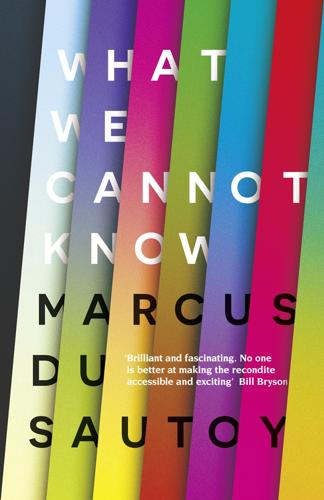
What We Cannot Know: Explorations at the Edge of Knowledge
by
Marcus Du Sautoy
Published 18 May 2016
Thanks to one man’s finite brain, the infinite seemed to be within reach. For Georg Cantor, infinity was not simply a way of speaking. It was a tangible mathematical object: The fear of infinity is a form of myopia that destroys the possibility of seeing the actual infinite, even though it in its highest form has created and sustains us, and in its secondary transfinite forms occurs all around us and even inhabits our minds. At the end of the nineteenth century you might expect a separation between those practising science and those who were religious. And yet Georg Cantor was both, and he writes about religion influencing his mathematical ideas.
…
Now we have a black line of length 1⁄9, a white line of length 1⁄9, a black line of length 1⁄9, then the white line of length 1⁄3 that was rubbed out on the first round, and then a repeat of black–white–black. You may have guessed what I am going to do next. Each time rub out the middle third of all the black lines that you see. Do this to infinity. The resulting picture is called the Cantor set, after the German mathematician Georg Cantor, whom we will encounter in the last Edge, when I explore what we can know about infinity. Suppose this Cantor set was actually controlling the outcome of the pendulum in my desktop toy. If I move the pendulum along this line, I find that this picture predicts some very complicated behaviour in some regions.
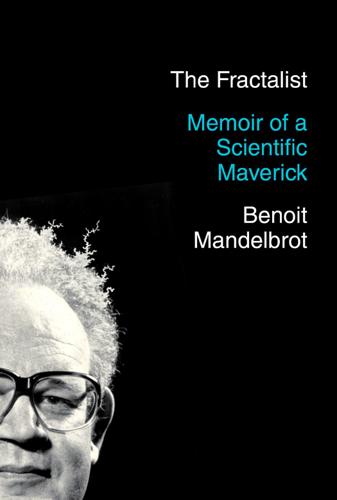
The Fractalist
by
Benoit Mandelbrot
Published 30 Oct 2012
There I was introduced to a world of images through outdated math books filled with illustrations. After the war, upon acceptance into the École Normale Supérieure, I realized that mathematics cut off from the mysteries of the real world was not for me, so I took a different path. Half a century before I was born, Georg Cantor (1845–1918) claimed that the essence of mathematics resides in its freedom. His peers went on to invent—or so they thought—a batch of shapes called “monsters,” or “pathologies,” and their study pushed mathematics into a deliberate flight from nature. Helped by computers, I actually drew those shapes and diametrically inverted their original intent.
…
One half of the story is part of the mystery the great mathematical physicist Eugene Wigner called the unreasonable effectiveness of mathematics in the natural sciences. A symmetric mystery should never be forgotten: the unreasonable effectiveness of the sciences in mathematics. Together these mysteries acknowledge that human thinking is unified within itself (and even with feeling), not in a trendy New Age fashion but very fundamentally. Georg Cantor claimed that the essence of mathematics lies in its freedom. But mathematicians do not pick problems from thin air for the pleasure of solving them. To the contrary, a mark of greatness resides in the ability to identify the most interesting problem in the framework of what is already known. And the highest level of the label “interesting” is invariably accompanied by a restrictive label, such as “in mathematics” or “in physics.”
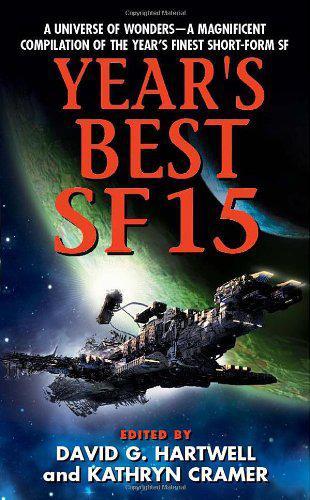
Year's Best SF 15
by
David G. Hartwell; Kathryn Cramer
Published 15 Aug 2010
My theory stands as firm as a rock; every arrow directed against it will quickly return to the archer. How do I know this? Because I have studied it from all sides for many years; because I have examined all objections which have ever been made against the infinite numbers; and above all because I have followed its roots, so to speak, to the first infallible cause of all created things. —Georg Cantor, German mathematician (1845–1918) In a finite world, Abdul Karim ponders infinity. He has met infinities of various kinds in mathematics. If mathematics is the language of Nature, then it follows that there are infinities in the physical world around us as well. They confound us because we are such limited things.
…
How much more palatable this is than the thought that the process stops somewhere, that at some point there is a pre-preon, for example, that is composed of nothing else but itself. How fractally sound, how beautiful if matter is a matter of infinitely nested boxes. There is a symmetry in it that pleases him. After all, there is infinity in the very large too. Our universe, ever expanding, apparently without limit. He turns to the work of Georg Cantor, who had the audacity to formalize the mathematical study of infinity. Abdul Karim painstakingly goes over the mathematics, drawing his finger under every line, every equation in the yellowing textbook, scribbling frantically with his pencil. Cantor is the one who discovered that certain infinite sets are more infinite than others—that there are tiers and strata of infinity.
…
He mentions this once to his friend, a Hindu called Gangadhar, who lives not far away. Gangadhar’s hands pause over the chessboard (their weekly game is in progress) and he intones a verse from the Vedas: From the Infinite, take the Infinite, and lo! Infinity remains… Abdul Karim is astounded. That his ancestors could anticipate Georg Cantor by four millennia! That fondness for science…that affability and condescension which God shows to the learned, that promptitude with which he protects and supports them in the elucidation of obscurities and in the removal of difficulties, has encouraged me to compose a short work on calculating by al-jabr and al-muqabala, confining it to what is easiest and most useful in arithmetic.
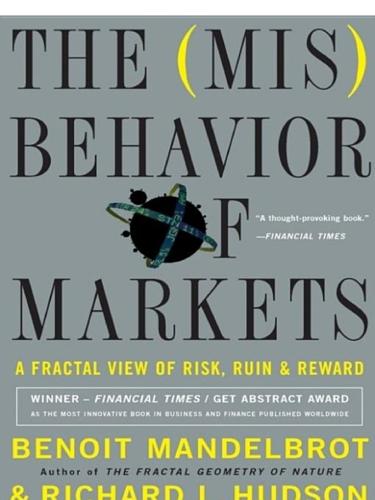
The Misbehavior of Markets: A Fractal View of Financial Turbulence
by
Benoit Mandelbrot
and
Richard L. Hudson
Published 7 Mar 2006
Finance requires a different class of fractals called self-affine, meaning that the scaling happens faster horizontally than vertically. In more general fractals, the parts can get systematically twisted, rotated, or in other ways transformed. The Cantor dust. This is one of the oldest fractals, named after Georg Cantor, a Russian-German of the nineteenth century who radically changed the way mathematicians think about infinity, sets, and many other basic ideas previously taken for granted. The Cantor dust is typical of his paradoxes. It starts as a simple line: straight, continuous, and one-dimensional (here a thickened bar to make it possible to actually see it).
…
price change departure from price swings following probability distributions as risk measured with three different Beta (β) analyzing investments with CAPM with definition of expected return in P/E effect with stock price with Bienaymé, Irénée Binomial time bending Black, Fischer background of eulogy of influence of modern finance influenced by options valued by Black Monday Black-Scholes formula calculation of origin of problem with results of risk evaluation with uses of volatility with Blindfolded archer’s score chance of Bond trading Paris exchange of Book-to-market Bouchaud, Jean-Philippe Bourbaki Boussinesq, Joseph Box-counting dimension fractals with Brahe, Tycho Bridge range in fractal geometry Bronchia fractals Brown, Robert Brownian motion charts with computer-simulated chart of dependence with Dow price movement compared to financial modeling with multifractal model with Nile river flooding with ordered appearance of pollen observed with price changes following risk values following Buffett, Warren E. Bull market Burton, Richard Francis Calculus Calvet, Laurent Canary Wharf Cantor, Georg Cantor dust fractals Capital Asset Pricing Model (CAPM) APT and discovery of finance with Merrill Lynch’s use of premise of results of study of time-scale with Capital budgeting Bachelier’s theories influencing Capital Fund Management CAPM. See Capital Asset Pricing Model Cartier-Bresson photograph Cartoon.
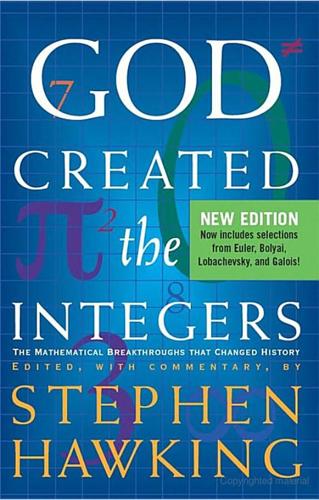
God Created the Integers: The Mathematical Breakthroughs That Changed History
by
Stephen Hawking
Published 28 Mar 2007
In order to show the complete agreement of these definitions with the foregoing, we need by (126) only to show that if ϕn(m) or ϕm(n)is denoted by ψ(n), the conditions ψ(1) = m′, ψ(n′) = ϕψ(n) are fulfilled which is easily done with the aid of complete induction (80) by the help of (131). 13For clearness and simplicity in what follows we restrict the notion of the number throughout to finite systems; if then we speak of a number of certain things, it is always understood that the system whose elements these things are is a finite system. Georg Cantor (1845–1918) HIS LIFE AND WORK Georg Cantor scaled the peaks of infinity and then plunged into the deepest abysses of the mind: mental depression. Georg Ferdinand Ludwig Phillipp Cantor was the firstborn son and name-sake of a Protestant father and a Catholic mother. His father, Georg Waldemar Cantor, was a German-born Protestant who moved to St Petersburg, the capital of Tsarist Russia, to become a stockbroker.
…
Weierstrass; herausgegeben, kommentiert und mit einem Anhang versehen von R. Siegmund-Schultze reprinted from R. Siegmund-Schultze (Ed.), Teubner, Leipzig, 1886 (Springer, Berlin), 1998. Richard Dedekind’s Essays on the Theory of Numbers, trans. Wooster W. Beman, courtesy of Dover Publications. Selections from Georg Cantor’s Contributions to the Founding of the Theory of Transfinite Numbers, trans. Philip E.B. Jourdain, courtesy of Dover Publications. Selections from Henri Lebesgue’s Integrale, Longeur, Aire reprinted from Annali di Matematica, Pura ed Applicata, 1902, Ser. 3, vol. 7, pp. 231–359. Kurt Gödel’s On Formally Undecidable Propositions of Principia Mathematica and Related Systems, trans.
…
Richard Dedekind: Frontispiece from Richard Dedekind Gesammelte mathematische Werke. Reprint by Chelsea Publishing Company, Bronx, NY, 1969, of the edition published in Brunswick by F. Vieweg, 1930–32. Reprinted by permission of the Chelsea Publishing Company. Photograph provided by the Library of Congress, call number QA3.D42. Georg Cantor: © CORBIS. Henri Lebesgue: Frontispiece from Henri Lebesgue Oeuvres Scientifiques, volume I. Reproduced by permission of L’Enseignement Mathématique, Universite De Geneve, Switzerland. Photograph provided by the Library of Congress, call number QA3.L27, vol. 1, copy 1. Kurt Gödel: Time Life Pictures/Getty Images.
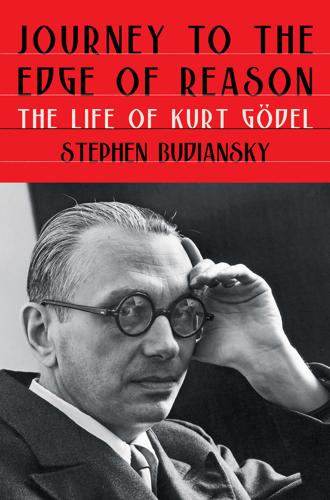
Journey to the Edge of Reason: The Life of Kurt Gödel
by
Stephen Budiansky
Published 10 May 2021
As Gödel himself would later note, non-constructive proofs which establish the existence of mathematical properties through such indirect means often have “strange results . . . e.g., that we can often prove the existence of an integer with a given property without anyone’s being able actually to name such an integer or even to describe a procedure by the application of which we could obtain such an integer.”63 Hilbert responded to Brouwer’s attacks with his usual call to arms. “Taking away the Law of the Excluded Middle from the mathematician,” he cried, “would be like forbidding the astronomer his telescope or the boxer the use of his fists!” And, referring to the work of Georg Cantor, whose studies of infinite sets in the late nineteenth century were regarded as a milestone in set theory and mathematical foundations, Hilbert vowed, “No one shall drive us out of the Paradise that Cantor has created for us!”64 When Brouwer gave a talk at Göttingen presenting his iconoclastic ideas, Hilbert stood up at the end and drily responded, “With your methods, most of the results of modern mathematics would have to be abandoned, and to me the important thing is not to get fewer results but to get more results.”
…
George Brown, a student who had taken detailed notes of Gödel’s 1938 lectures at the Institute on the subject, produced a draft and was helping him prepare the manuscript for publication by Princeton University Press.8 Next to his Incompleteness Theorem, it was to be his most significant mathematical contribution, one that went to the heart of the foundations of set theory, the concept of infinity, and Gödel’s own philosophical ideas about mathematical truth and reality. The Continuum Hypothesis had first been proposed by Georg Cantor in 1878, and had been a source of mathematical controversy ever since. In the course of his pathbreaking work on infinite sets, Cantor made the remarkable discovery that infinity comes in different sizes. The smallest infinity is the kind represented by the ordinary counting numbers, 1, 2, 3, . . .
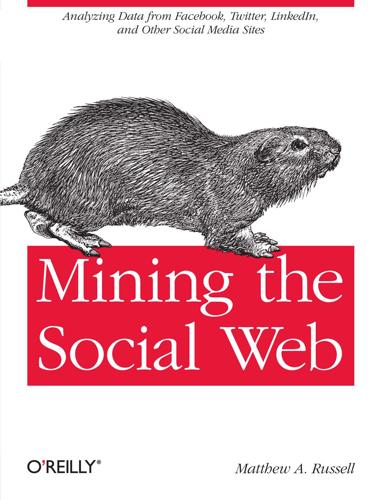
Mining the Social Web: Finding Needles in the Social Haystack
by
Matthew A. Russell
Published 15 Jan 2011
A few of the most relevant ones for the upcoming work at hand include: smembers Returns all of the members of a set scard Returns the cardinality of a set (the number of members in the set) sinter Computes the intersection for a list of sets sdiff Computes the difference for a list of sets mget Returns a list of string values for a list of keys mset Stores a list of string values against a list of keys sadd Adds an item to a set (and creates the set if it doesn’t already exist) keys Returns a list of keys matching a regex-like pattern Skimming the pydoc for Python’s built-in set data type should convince you of the close mapping between it and the Redis APIs. We’re Gonna Analyze Like It’s 1874 Although the concepts involved in set theory are as old as time itself, it is Georg Cantor who is generally credited with inventing set theory. His paper, “On a Characteristic Property of All Real Algebraic Numbers,” written in 1874, formalized set theory as part of his work on answering questions related to the concept of infinity. For example: Are there more natural numbers (zero and the positive integers) than integers (positive and negative numbers)?
…
intersection of entities in #TeaParty and #JustinBieber tweets, How Much Overlap Exists Between the Entities of #TeaParty and #JustinBieber Tweets? Redis native functions for, Elementary Set Operations sample, for Twitter friends and followers, Elementary Set Operations set theory, invention by Georg Cantor, Elementary Set Operations SFDP (scalable force directed placement), Graphviz, Visualizing Community Structures in Twitter Search Results similarity metrics, What Entities Co-Occur Most Often with #JustinBieber and #TeaParty Tweets?, Common Similarity Metrics for Clustering, Finding Similar Documents, The Theory Behind Vector Space Models and Cosine Similarity, Clustering Posts with Cosine Similarity, Clustering Posts with Cosine Similarity, Clustering Posts with Cosine Similarity, Before You Go Off and Try to Build a Search Engine… common, for clustering, Common Similarity Metrics for Clustering cosine similarity, Finding Similar Documents, The Theory Behind Vector Space Models and Cosine Similarity, Clustering Posts with Cosine Similarity, Clustering Posts with Cosine Similarity, Before You Go Off and Try to Build a Search Engine… clustering posts using, Clustering Posts with Cosine Similarity, Clustering Posts with Cosine Similarity limitations of, Before You Go Off and Try to Build a Search Engine… theory behind vector space models and, The Theory Behind Vector Space Models and Cosine Similarity most frequent entities co-occurring with #JustinBieber and #TeaParty tweets, What Entities Co-Occur Most Often with #JustinBieber and #TeaParty Tweets?
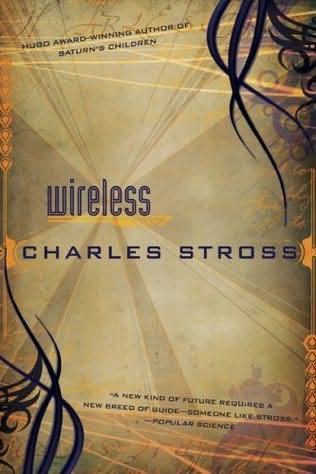
Wireless
by
Charles Stross
Published 7 Jul 2009
(True names have power, so the Laundry is big on call by reference, not call by value; I’m no more “Bob Howard” than the “Alan Turing” in room two is the father of computer science and applied computational demonology.) She continues. “The real Alan Turing would be nearly a hundred by now. All our long-term residents are named for famous mathematicians. We’ve got Alan Turing, Kurt Godel, Georg Cantor, and Benoit Mandelbrot. Turing’s the oldest, Benny is the most recent—he actually has a payroll number, sixteen.” I’m in five digits—I don’t know whether to laugh or cry. “Who’s the nameless one?” I ask. “That would be Georg Cantor,” she says slowly. “He’s probably in room four.” I bend over the indicated periscope, remove the brass cap, and peer into the alien world of the nameless K. Syndrome survivor. I see a whitewashed room, quite spacious, with a toilet area off to one side and a bedroom accessible through a doorless opening—much like the short-term ward.
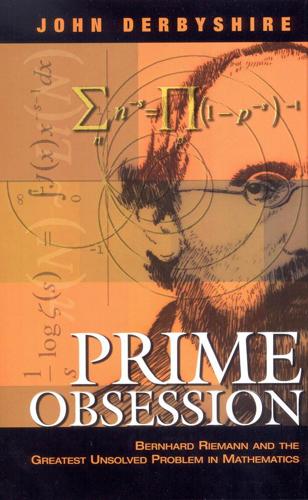
Prime Obsession:: Bernhard Riemann and the Greatest Unsolved Problem in Mathematics
by
John Derbyshire
Published 14 Apr 2003
Sample PRIME OBSESSION 18 ■ theorem: For any two numbers x and y, (x + y) × (x − y) = x2 − y2. Analysis—The study of limits. Sample theorem: The harmonic series is divergent (that is, it increases without limit). Modern mathematics contains much more than that, of course. It includes set theory, for example, created by Georg Cantor in 1874, and “foundations,” which another George, the Englishman George Boole, split off from classical logic in 1854, and in which the logical underpinnings of all mathematical ideas are studied. The traditional categories have also been enlarged to include big new topics—geometry to include topology, algebra to take in game theory, and so on.
…
And not only for 2 , either, but for an infinity of other irrationals! For the amazing thing is that not only is there an infinity of irrationals, and not only are they, too, everywhere dense; but there is a precise mathematical sense in which there are far more irrationals than rationals. This was shown by Georg Cantor in 1874. The number of rational numbers is infinite, and the number of irrational numbers is infinite; but the second infinity is bigger than the first. How on earth do they all fit on the real line? How does such an inconceivably vast number of irrationals squeeze in among the rationals, if the rationals themselves are everywhere dense?
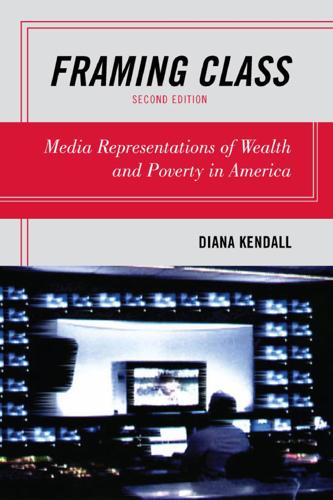
Framing Class: Media Representations of Wealth and Poverty in America
by
Diana Elizabeth Kendall
Published 27 Jul 2005
Although based on people’s perceptions about their own communities, these statements also suggest that individuals living in the region share good middle-class moral values and a belief in the work ethic. National and regional news coverage about a community’s values are not unique. Like the report carried by CNN, articles in local newspapers such as the Detroit News extol the virtues of the middle class. Consider, for example, editorial writer George Cantor’s story titled “Middle-Class Livonia Turns into Wayne County Power”: Livonia is a seething hotbed of middle-class values. It has an almost invisible crime rate [and] neat residential streets, many of them looking as if they had been time-warped from 1956 Detroit. . . . But it is Livonia’s sheer lack of drama that is its charm.
…
Ehrenreich, Fear of Falling, 51. 42. Robin M. Williams Jr., American Society: A Sociological Interpretation, 3rd ed. (New York: Knopf, 1970). 43. Kim Fulcher Linkins, “Midwest Lures Family-Based IT,” CNN.com, 1999, http://www.cnn.com/TECH/computing/9906/11/midwest.idg/index.html (accessed February 17, 2004). 44. George Cantor, “Middle-Class Livonia Turns into Wayne County Power,” Detroit News, January 26, 2002, http://www.detnews.com/2002/editorial/0201/28/ d07-400393.htm (accessed February 18, 2004). 45. Jill Lawrence, “Values, Points of View Separate Towns—and Nation,” USA Today, February 18, 2002, A10. 46. Lawrence, “Values, Points of View Separate Towns.” 9781442202238.print.indb 255 2/10/11 10:47 AM 256 Notes to Pages 179–188 47.
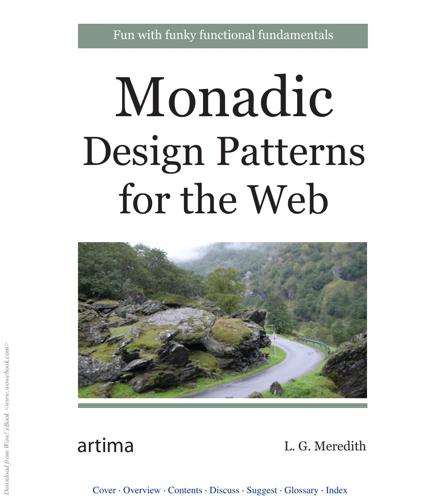
Monadic Design Patterns for the Web
by
L.G. Meredith
John Horton Conway, in his inimitably playful style, found a simple data structure that supported or modeled the operations of the field of Real numbers. His data structure, however, not only captured the Reals but also many more of the notions of number, quantity, and order that had been proposed, including Georg Cantor’s infinities and Abraham Robinson’s infinitesimals. Moreover, Conway’s data structure is incredibly simple and easily understood and – best of all – represents two-player games! Therefore, just by playing along with Conway we get to organize and gain insight into how numbers work. It also turns out that the game interpretation really pays off in its own right.
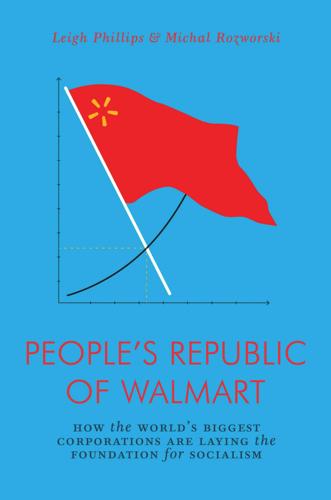
The People's Republic of Walmart: How the World's Biggest Corporations Are Laying the Foundation for Socialism
by
Leigh Phillips
and
Michal Rozworski
Published 5 Mar 2019
A 2002 rejoinder to the Cockshott-Cottrell perspective from Polish logician Witold Marciszewski of the University of Warsaw argued that socialist planning would require what are called super-Turing machines, or hypercomputers—theoretical computers that go beyond the computability of standard computers, which some claim are not only physically impossible to build, but logically impossible to devise. And in 2006, Robert Murphy, a young Austrian School economist with the Pacific Research Institute, a Californian free-market think tank, employed set theorist Georg Cantor’s diagonal argument to claim that the list of prices in any planning board’s matrix would need to contain not merely billions or trillions of prices, but—as with the set of all real numbers or set of all subsets of integers—an uncountably infinite number of them, therefore making economy-wide socialist calculation impossible in principle, not just in practice, because the full list of all prices could never be listed.
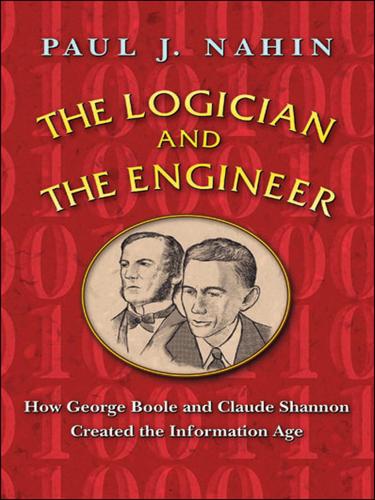
The Logician and the Engineer: How George Boole and Claude Shannon Created the Information Age
by
Paul J. Nahin
Published 27 Oct 2012
In other words, the rationals and the integers are infinite sets of the same size, even though the set of the integers is included in the set of rationals. This astonishing result, totally at odds with intuition (what is often called “common sense’’), was discovered by the Russian-born German mathematician Georg Cantor (1845–1918) in 1874. Most mathematicians of his day thought Cantor was crazy, but it was they (not him) who were wrong (although, ironically, Cantor died in a mental institution). To show how the rationals are countably infinite, Cantor had two brilliant ideas. First, he showed how to systematically write down all the rationals so as not to overlook even one.

Humankind: Solidarity With Non-Human People
by
Timothy Morton
Published 14 Oct 2017
Nagel and Wittgenstein claim we can’t identify at all with the worlds of bats and lions. But can we identify with human worlds?43 Can we even identify with our own worlds? What does identify mean, if identity isn’t all it’s cracked up to be in the first place? Of course we can share the world of a lion, and she or he can share ours. MODAL BEINGS Georg Cantor showed that there is a gap between numbers and sets of numbers. Likewise, there is a gap between lifeforms and sets of lifeforms. We can think of these sets as ecosystems, biomes, biospheres—we can think of these sets at any scale, and there is no easy continuity between these sets. An environment just is a certain set of lifeforms.
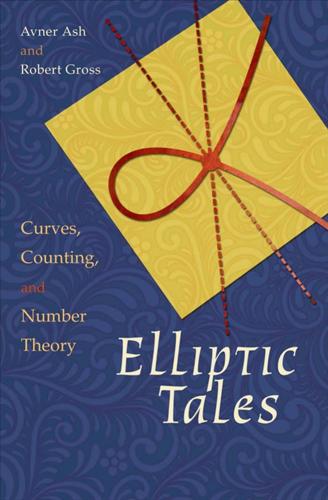
Elliptic Tales: Curves, Counting, and Number Theory
by
Avner Ash
and
Robert Gross
Published 12 Mar 2012
How Big Is Infinity? When we count mathematical objects such as the number of solutions to an equation, the first fundamental distinction we might make is whether the answer is finite or infinite. If it is finite, we can then ask, “How many?” What if the number is infinite? The German mathematician Georg Cantor (1845–1918) invented a theory of different sizes of infinity. The smallest infinity is called “countably infinite,” and it occurs when the infinite set can be put into one-to-one correspondence with the set of all counting numbers 1, 2, 3, . . . . Can more be said when an infinite set is countably infinite?
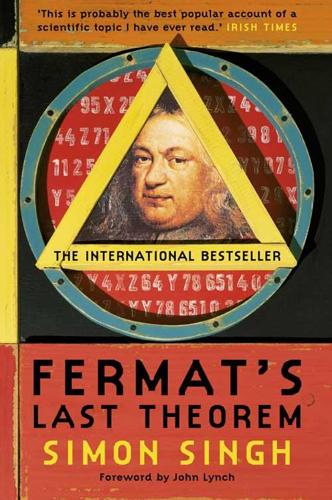
Fermat’s Last Theorem
by
Simon Singh
Published 1 Jan 1997
No other question has ever moved so profoundly the spirit of man; no other idea has so fruitfully stimulated his intellect; yet no other concept stands in greater need of clarification than that of the infinite.’ To resolve the paradox of the infinite it is necessary to define what is meant by infinity. Georg Cantor, who worked alongside Hilbert, defined infinity as the size of the never-ending list of counting numbers (1, 2, 3, 4, …). Consequently anything which is comparable in size is equally infinite. By this definition the number of even counting numbers, which would intuitively appear to be smaller, is also infinite.
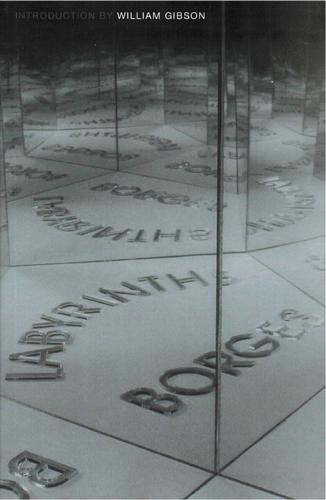
Labyrinths
by
Jorge Luis Borges
,
Donald A. Yates
,
James E. Irby
,
William Gibson
and
André Maurois
Published 1 Jan 1962
William James (Some Problems of Philosophy, 1911, page 182) denies that fourteen minutes can pass, because first it is necessary for seven to pass, and before the seven, three and a half, and before the three and a half, a minute and three quarters, and so on until the end, the invisible end, through tenuous labyrinths of time. Descartes, Hobbes, Leibniz, Mill, Renouvier, Georg Cantor, Gomperz, Russell and Bergson have formulated explanations—not always inexplicable and vain in nature—of the paradox of the tortoise. (I have registered some of them in my book Discusión, 1932, pages 151–161). Applications abound as well, as the reader has seen. The historical applications do not exhaust its possibilities: the vertiginous regressus in infinitum is perhaps applicable to all subjects.

The Myth of Artificial Intelligence: Why Computers Can't Think the Way We Do
by
Erik J. Larson
Published 5 Apr 2021
Turing realized that Gödel’s use of self-reference also applied to questions about decision procedures or, in effect, computer programs. In particular, he realized that there must exist (real) numbers that no definite method could “calculate,” by writing out their decimal expansion, digit by digit. He imported a result from the nineteenth-century mathematician Georg Cantor, who proved that real numbers (those with a decimal expansion) were more numerous than the integers, even though real numbers and integers are both infinite. Turing stood on the shoulders of giants, perhaps. But in the end, his work in “Computable Numbers” proved again a negative. It was a limiting result: no universal decision procedure was possible.
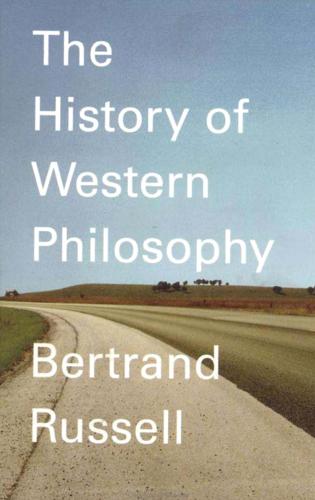
A History of Western Philosophy
by
Aaron Finkel
Published 21 Mar 1945
There is one entry in the lower row for every one in the top row; therefore the number of terms in the two rows must be the same, although the lower row consists of only half the terms in the top row. Leibniz, who noticed this, thought it a contradiction, and concluded that, though there are infinite collections, there are no infinite numbers. Georg Cantor, on the contrary, boldly denied that it is a contradiction. He was right; it is only an oddity. Georg Cantor defined an “infinite” collection as one which has parts containing as many terms as the whole collection contains. On this basis he was able to build up a most interesting mathematical theory of infinite numbers, thereby taking into the realm of exact logic a whole region formerly given over to mysticism and confusion.
…
Leibniz believed in actual infinitesimals, but although this belief suited his metaphysics it had no sound basis in mathematics. Weierstrass, soon after the middle of the nineteenth century, showed how to establish the calculus without infinitesimals, and thus at last made it logically secure. Next came Georg Cantor, who developed the theory of continuity and infinite number. “Continuity” had been, until he defined it, a vague word, convenient for philosophers like Hegel, who wished to introduce metaphysical muddles into mathematics. Cantor gave a precise significance to the word, and showed that continuity, as he defined it, was the concept needed by mathematicians and physicists.
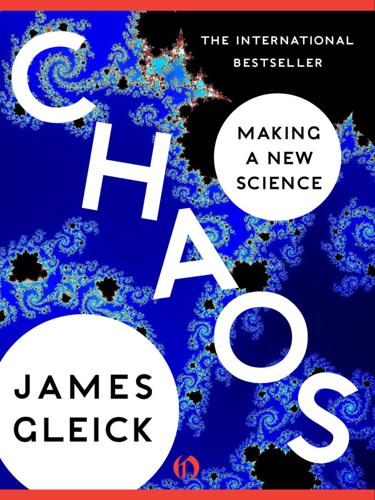
Chaos: Making a New Science
by
James Gleick
Published 18 Oct 2011
(Once, to Mandelbrot’s horror, a batch of data seemed to contradict his scheme—but it turned out that the engineers had failed to record the most extreme cases, on the assumption that they were irrelevant.) Engineers had no framework for understanding Mandelbrot’s description, but mathematicians did. In effect, Mandelbrot was duplicating an abstract construction known as the Cantor set, after the nineteenth-century mathematician Georg Cantor. To make a Cantor set, you start with the interval of numbers from zero to one, represented by a line segment. Then you remove the middle third. That leaves two segments, and you remove the middle third of each (from one-ninth to two-ninths and from seven-ninths to eight-ninths). That leaves four segments, and you remove the middle third of each—and so on to infinity.
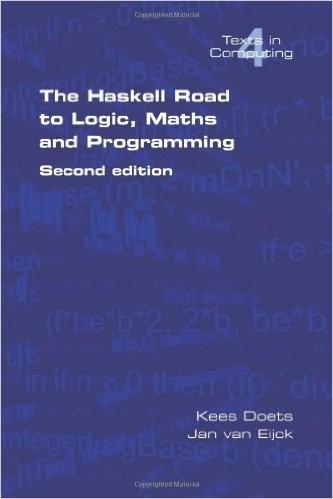
The Haskell Road to Logic, Maths and Programming
by
Kees Doets
,
Jan van Eijck
and
Jan Eijck
Published 15 Jan 2004
Thus, the need for notions that are primitive, i.e., undefined. For instance, we shall consider as undefined here the notions of set and natural number. Given the notion of a set, that of a function can be defined. However, in a context that is not set-theoretic, it could well be an undefined notion. Georg Cantor (1845-1915), the founding father of set theory, gave the following description. The Comprehension Principle. A set is a collection into a whole of definite, distinct objects of our intuition or of our thought. The objects are called the elements (members) of the set. Usually, the objects that are used as elements of a set are not sets themselves.
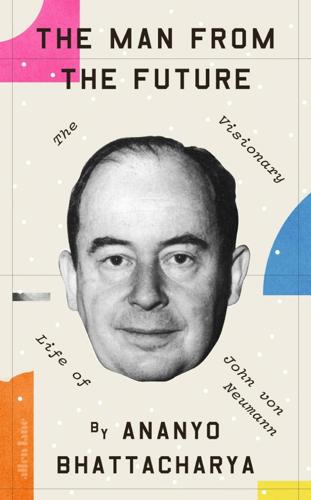
The Man From the Future: The Visionary Life of John Von Neumann
by
Ananyo Bhattacharya
Published 6 Oct 2021
Many rallied to Hilbert’s side, eager to make mathematics (and so, it followed by Hilbert’s logic, the sciences) unassailable. But his project ran into the sand almost as soon as it was conceived. In 1901, the British philosopher and logician Bertrand Russell found a paradox at the heart of set theory, a branch of mathematics pioneered by Georg Cantor a quarter of a century earlier. Cantor, a brilliant, deeply religious Russian-born German Protestant, was the first mathematician to see that there are a multitude of different infinities, and some infinities are demonstrably larger than others. To the greatest of his infinities, the ‘Absolute’, Cantor assigned the Greek capital omega, Ω.
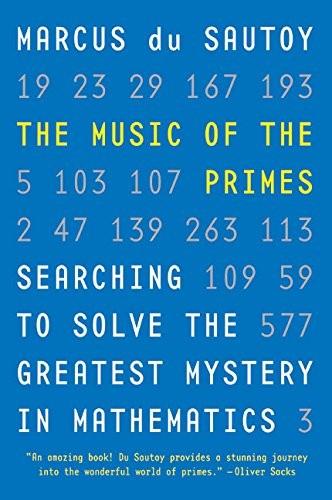
The Music of the Primes
by
Marcus Du Sautoy
Published 26 Apr 2004
As he paused for a breather, lying on his back in a meadow near Granchester, he saw that an idea which had been used successfully to answer a question about irrational numbers might be applicable to this question about the existence of a machine to test for provability. Turing’s idea was based on a startling discovery made in 1873 by Georg Cantor, a mathematician from Halle in Germany. He had found that there were different sorts of infinities. It may seem a strange proposition, but it is actually possible to compare two infinite sets and say that one is bigger than the other. When Cantor announced his discovery, in the 1870s, it was considered almost heretical or at best the ramblings of a madman.
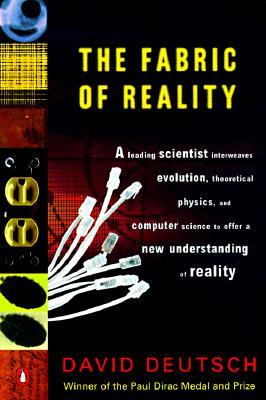
The Fabric of Reality
by
David Deutsch
Published 31 Mar 2012
Even this futuristic machine's repertoire is drastically circumscribed by the mere fact of its being a physical object. It does not even scratch the surface of what is logically possible, as I shall now show. The basic idea of the proof - known as a diagonal argument - predates the idea of virtual reality. It was first used by the nineteenth-century mathematician Georg Cantor to prove that there are infinite quantities greater than the infinity of natural number (1, 2, 3...). The same form of proof is at the heart of the modern theory of computation developed by Alan Turing and others in the 1930s. It was also used by Kurt Gödel to prove his celebrated 'incompleteness theorem', of which more in Chapter 10.
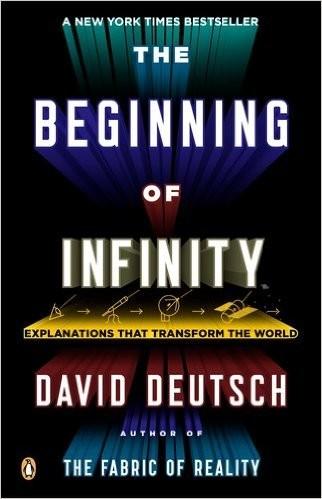
The Beginning of Infinity: Explanations That Transform the World
by
David Deutsch
Published 30 Jun 2011
Similarly, if you reject the infinite, you are stuck with the finite, and the finite is parochial. So there is no way of stopping there. The best explanation of anything eventually involves universality, and therefore infinity. The reach of explanations cannot be limited by fiat. One expression of this within mathematics is the principle, first made explicit by the mathematician Georg Cantor in the nineteenth century, that abstract entities may be defined in any desired way out of other entities, so long as the definitions are unambiguous and consistent. Cantor founded the modern mathematical study of infinity. His principle was defended and further generalized in the twentieth century by the mathematician John Conway, who whimsically but appropriately named it the mathematicians’ liberation movement.

Turing's Cathedral
by
George Dyson
Published 6 Mar 2012
“Gödel obtained this result by a very ingenious construction which uses the tricks of his proofs in formal logics! Did you hear about this?” von Neumann wrote to Stan Ulam in May of 1941. “Please send Gödel continuum hypothesis notes,” Alan Turing cabled from King’s College, Cambridge, on December 16.26 Proposed by George Cantor in 1877, and presented in 1900 as the first of Hilbert’s twenty-three unsolved problems, the continuum hypothesis states that the set of real numbers (the continuum) is the smallest infinity whose size is larger than the set of integers, and that no intermediate-sized infinities lie in between.

Nexus: A Brief History of Information Networks From the Stone Age to AI
by
Yuval Noah Harari
Published 9 Sep 2024
The annals of science are full of similar cases. Before the theory of relativity and quantum mechanics became the cornerstones of twentieth-century physics, they initially provoked bitter controversies, including personal assaults by the old guard on the proponents of the new theories. Similarly, when Georg Cantor developed in the late nineteenth century his theory of infinite numbers, which became the basis for much of twentieth-century mathematics, he was personally attacked by some of the leading mathematicians of his day like Henri Poincaré and Leopold Kronecker. Populists are right to think that scientists suffer from the same human biases as everyone else.
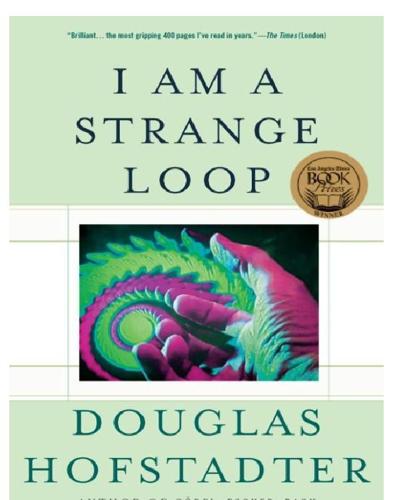
I Am a Strange Loop
by
Douglas R. Hofstadter
Published 21 Feb 2011
Page 139 No formula can literally contain… [Nagel and Newman] presents this idea very clearly, as does [Smullyan 1961]. See also [Hofstadter 1982]. Page 139 an elegant linguistic analogy… See [Quine] for the original idea (which is actually a variation of Gödel’s idea (which is itself a variation of an idea of Jules Richard (which is a variation of an idea of Georg Cantor (which is a variation of an idea of Euclid (with help from Epimenides))))), and [Hofstadter 1979] for a variation on Quine’s theme. Page 147 “…and Related Systems (I)”… Gödel put a roman numeral at the end of the title of his article because he feared he had not spelled out sufficiently clearly some of his ideas, and expected he would have to produce a sequel.
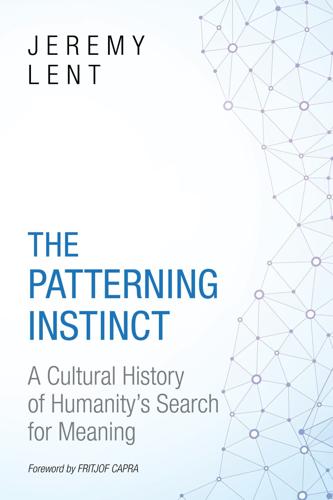
The Patterning Instinct: A Cultural History of Humanity's Search for Meaning
by
Jeremy Lent
Published 22 May 2017
This effectively put an end to one aspect of the Platonic cosmos—the idea, so mesmerizing to Kepler, that the heavens were perfectly geometric and followed different laws than on earth. At the same time, Newton's laws gave further credence to the Platonic notion of an abstract dimension of Ideas that were eternally fixed and true. Throughout the nineteenth century, mathematicians continued to visualize a Platonic universe. One of the greatest, Georg Cantor, a devout Catholic, believed that, through his mathematical study of infinity, he could prove the existence of God, much as Anselm had been asked by his monks to do in the eleventh century. Cantor saw numbers as eternal realities that were discovered by humans and followed God-given laws. Other mathematicians, less devout than Cantor, held the same conviction that mathematics represented a reality that was discovered, not constructed, by the human mind.
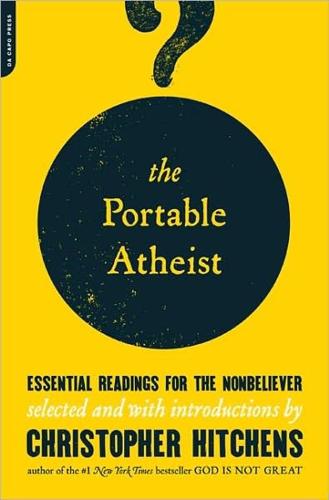
The Portable Atheist: Essential Readings for the Nonbeliever
by
Christopher Hitchens
Published 14 Jun 2007
Craig and other theists also make another, related argument that the universe had to have had a beginning at some point, because if it were infinitely old, it would have taken an infinite time to reach the present. However, as philosopher Keith Parsons has pointed out, “To say the universe is infinitely old is to say that it had no beginning—not a beginning that was infinitely long ago.”14 Infinity is an abstract mathematical concept that was precisely formulated in the work of mathematician Georg Cantor in the late nineteenth century. However, the symbol for infinity, “©,” is used in physics simply as a shorthand for “a very big number.” Physics is counting. In physics, time is simply the count of ticks on a clock. You can count backward as well as forward. Counting forward you can get a very big but never mathematically infinite positive number and time “never ends.”

The Stack: On Software and Sovereignty
by
Benjamin H. Bratton
Published 19 Feb 2016
In twelfth century Majorca, Ramon Llull described logical machines, influencing Gottfried Leibniz, who developed a predictive calculus and a biliteral alphabet that, drawing on the I Ching, allowed for the formal reduction of any complex symbolic expression to a sequence of discrete binary states (zero and one, on and off). Later, the formalization of logic within the philosophy mathematics (from Pierre-Simon Laplace, to Gottlob Frege, Georg Cantor, David Hilbert, and so many others) helped to introduce, inform, and ultimately disprove a version of the Enlightenment as the expression of universal deterministic processes (of both thought and physics). In 1936, with his now-famous paper, “On Computable Numbers, with an Application to the Entscheidungsproblem,” a very young Alan Turing at once introduced the theoretical basis of modern computing and demonstrated the limits of what could and could not ever be calculated and computed by a universal technology.

Global Catastrophic Risks
by
Nick Bostrom
and
Milan M. Cirkovic
Published 2 Jul 2008
Haimes is the recipient of the 2001 Norbert Weiner Award, the highest award Authors' biographies 525 presented by the Institute of Electrical and Electronics Engineers and Systems, Man, and Cybernetics Society; the 2000 Distinguished Achievement Award, the highest award presented by the Society for Risk Analysis; the 1 997 Warren A. Hall Medal, the highest award presented by Universities Council on Water Resources; the 1 995 Georg Cantor Award, presented by the I nternational Society on Multiple Criteria Decision Making; and the 1 994 Outstanding Contribution Award presented by the Institute of Electrical and Electronics Engineers and Systems, Man, and Cybernetics Society, among others. H e i s the Engineering Area Editor o f Risk Analysis: An International journal, member of the Editorial Board ofjournal of Homeland Security and Emergency Management, and Associate Editor of Reliability Engineering and Systems Safety.

Bourgeois Dignity: Why Economics Can't Explain the Modern World
by
Deirdre N. McCloskey
Published 15 Nov 2011
“Jews are conspicuously underrepresented in the pantheon of great inventors before the modern industrial age. Jewish traditional culture was inherently backward-looking and conservative and thus did not encourage revolutionary ideas and thinking outside the box.”4 Well, except for Marx and Freud, David Ricardo and Georg Cantor, George Gershwin and Lenny Bruce—who nonetheless make Mokyr’s point, having invented ideas, not machines. A similar point can be made about the origins of the French Enlightenment in the debate between the ancients and the moderns, or of the Scottish Enlightenment in the ending of Calvinist rule.
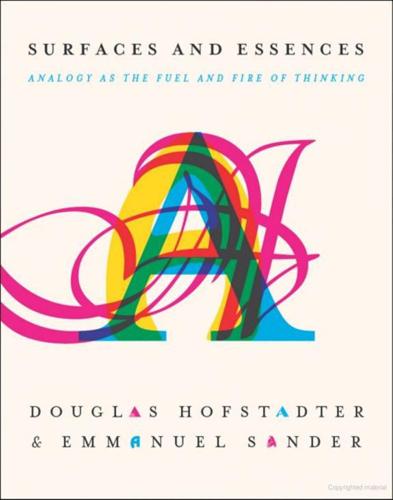
Surfaces and Essences
by
Douglas Hofstadter
and
Emmanuel Sander
Published 10 Sep 2012
Balderdash!” Thus reacted many mathematicians at the end of the nineteenth century, yet such objections would just bring smiles to the lips of their counterparts today, for whom the idea seems self-evident. In fact, this is just the tip of the iceberg, for after the work of the German mathematician Georg Cantor, it became a commonplace that there is not just one infinity, but many infinities (of course, there are an infinite number of different infinities). Spaces with a countably infinite number of dimensions (this is the smallest version of infinity, and mathematicians would say that it is the cardinality of the set of natural numbers — that is, of the set of all whole numbers) are called “Hilbert spaces”, and for theoretical physicists, quantum mechanics “lives” in such a space; that is to say, according to modern physics, our universe is based on the mathematics of Hilbert spaces.
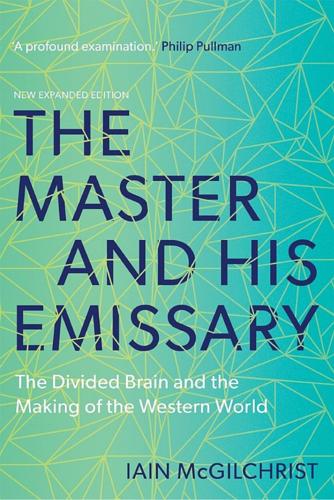
The Master and His Emissary: The Divided Brain and the Making of the Western World
by
Iain McGilchrist
Published 8 Oct 2012
It’s hardly surprising that scientific method for a long time led to a vision of the universe – the Newtonian universe – which reflected the principles of the scientific method. But when it began to compel conclusions incompatible with the model assumed by its method, a ‘paradoxical’ universe, that was a more revealing finding. In the late nineteenth-century Georg Cantor struggled with the idea that there was a necessary uncertainty and incompleteness to the realm of mathematics. Infinity was no longer tameable by turning it into an abstract concept, giving it a name, and then carrying on as though it were just another number. He came to the realisation that there is not just one ‘infinity’, but an infinity of infinities, beyond anything we can capture or re-present, something that was real, not just taking series ‘as far as they will go’, but beyond; something Other in nature than the series that tried to reach it, and that could in principle never be reached by any kind of known cognitive process.
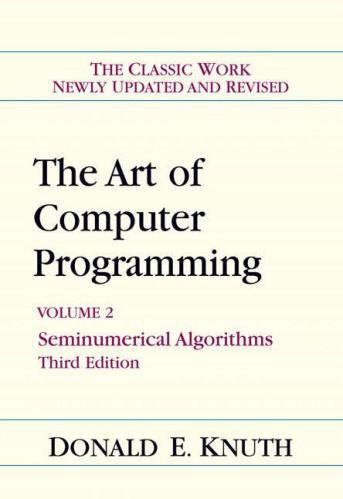
The Art of Computer Programming
by
Donald Ervin Knuth
Published 15 Jan 2001
It is possible to add and subtract mixed-radix numbers by using a straight- straightforward generalization of the usual addition and subtraction algorithms, provided of course that the same mixed-radix system is being used for both operands (see exercise 4.3.1-9). Similarly, we can easily multiply or divide a mixed-radix number by small integer constants, using simple extensions of the familiar pencil- and-paper methods. Mixed-radix systems were first discussed in full generality by Georg Cantor [Zeitschrift fiir Math, und Physik 14 A869), 121-128]. Exercises 26 and 29 give further information about them. Several questions concerning irrational radices have been investigated by W. Parry, Ada Math. Acad. Sci. Hung. 11 A960), 401-416. Besides the systems described in this section, several other ways to represent numbers are mentioned elsewhere in this series of books: the combinatorial num- number system (exercise 1.2.6-56); the Fibonacci number system (exercises 1.2.8-34, 5.4.2-10); the phi number system (exercise 1.2.8-35); modular representations (Section 4.3.2); Gray code (Section 7.2.1); and Roman numerals (Section 9.1).